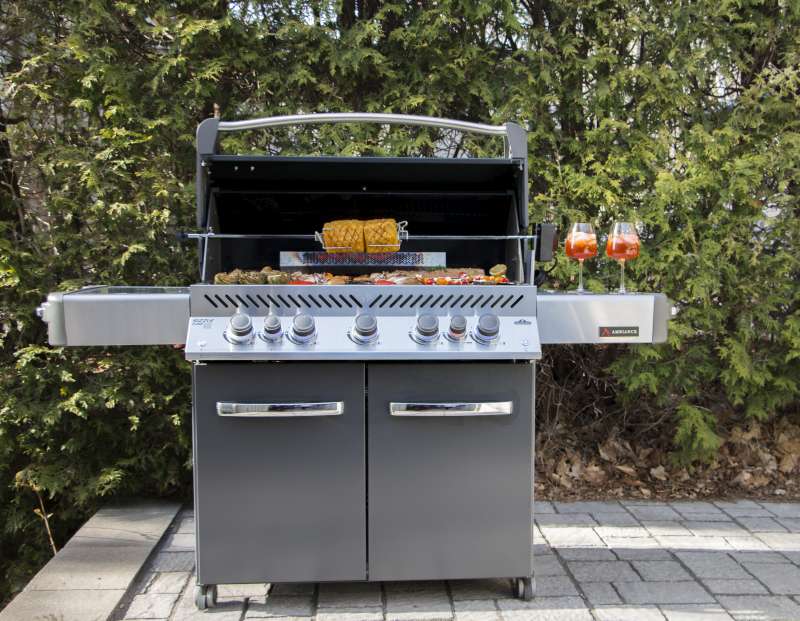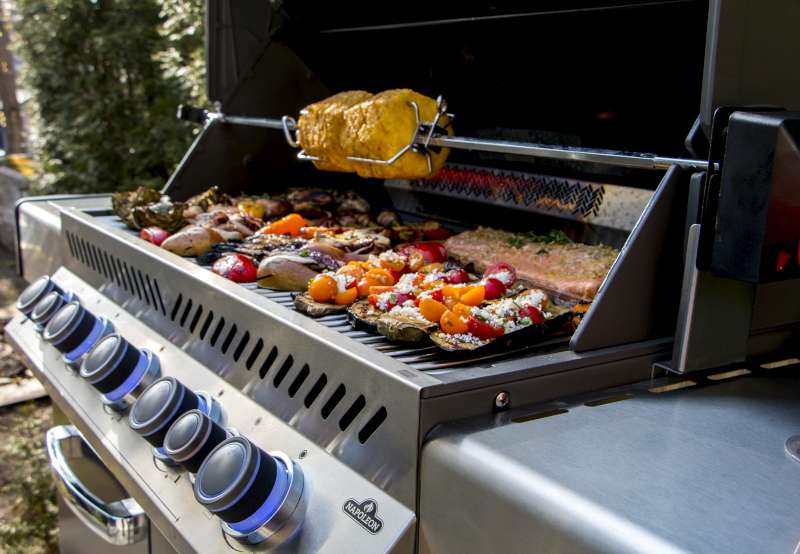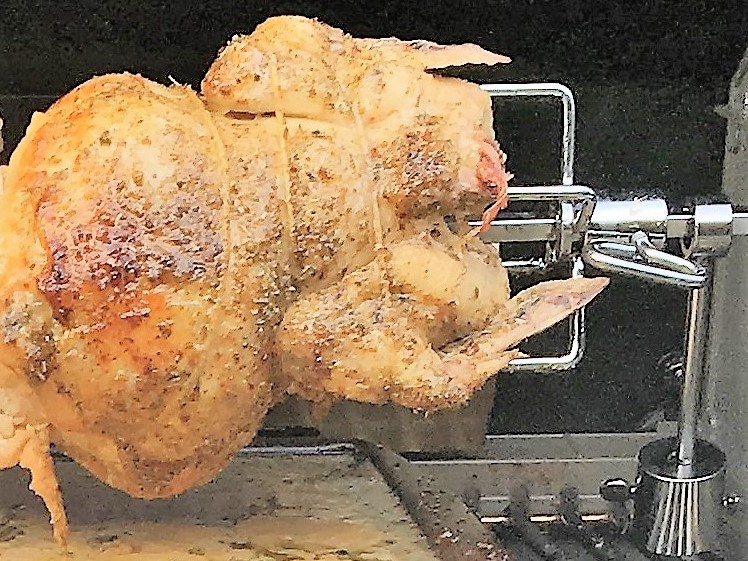Barbecues are quite efficient and versatile cooking appliances. Gaz and charcoal grills allow you to cook in the case of a power outage. In summer, you can cook your food without heating the whole house. Different additions and techniques allow you to use various other cooking methods, such as smoking or roasting meat.
Certain models come equipped with a rotisserie kit and burner. However, just because your grill doesn’t include this set doesn’t mean you should go without it. All you must do is get the accessories, and that’s it.
Advantages of rotisserie
Once you’ve mastered rotisserie, it is the easiest way to cook, as it allows for even cooking and requires little supervision.
Rotisserie meat is juicy and tender. Since the rotisserie is continuously rotating, in a way, your meat is basting itself. If you prefer, you can baste it occasionally when it’s cooking, but this isn’t necessary.
Rotisserie meats
Rotisserie is ideal for cooking any big meat cuts. Whole chickens, turkey, roast beef or lamb, pork loins, these are all types of meat you’ll love cooking with a rotisserie.
Keep in mind that a rotisserie can hold a maximum weight of ten to twenty pounds. Check your kit’s operation manual to make sure you know the largest load it can carry.
Rotisserie set components
Whether your rotisserie kit is a default component of your grill, or you’ve bought it separately, the parts are the same.
There’s a motor, a spit rod, heavy-duty forks, and a counterweight. Some ensembles also come with a drip pan.
How to use the rotisserie set
The rotisserie requires a bit more assembly work, but cooking is so much easier afterwards.
Season your meat, and make sure to secure every piece with butcher’s twine. Push the spit rod all the way through the meat, then lock it in place using the heavy-duty forks. Make sure nothing moves. Add more twine if necessary.
Check that your meat is well balanced on the rod. The bigger the piece of meat, the more chances it has of being unbalanced. To know if your piece of meat is balanced or not, remove the barbecue grills and set up the rotisserie without the motor. If it’s unbalanced, gravity will force the rod to turn, the heaviest side finding itself on the bottom. To solve this, simply attach the counterweight so that it sticks up on the side that’s facing up.
After, test the rotisserie. Connect the motor and make sure the rod is rotating, that the meat is attached securely and that it has enough room in the barbecue to rotate correctly. If everything functions well, shut the motor off and remove the spit rod from the barbecue.
A rotisserie uses indirect heat. The ideal temperature to cook using a rotisserie is 176 °C (350 °F). If you have a charcoal grill, make a coal pile on each side of the barbecue, and install a drip pan between them. Light the briquettes to preheat the grill.
If you are using a gas grill, preheat it by setting all burners on high. After fifteen minutes, turn off the burners in the center, and set the end burners to medium heat. Place a drip pan in the center. If you have a rotisserie burner, turn it on. As to not overcook the outside of the meat, the rotisserie burner should only run for the first ten to fifteen minutes.
Then install the spit rod and motor, and turn it on. Once again, make sure the piece of meat has room to rotate inside the barbecue and close the lid. Only check your meat every thirty minutes to keep the lid closed as much as possible.
Drip Pan
The drip pan is used to collect fat dripping from the meat, so it doesn’t fall into the burners. Add water to the pan to prevent the fat from catching fire and ruining your cooking.
Instead of water, you can add beer, wine, or fruit juice. It’ll give your meat more flavour.
You can also put water, add lemon slices, bell peppers or other vegetables, and, once the cooking is done, make a sauce out of it to garnish your meat.
 The end of cooking
The end of cooking
Make sure the meat is cooked using a cooking thermometer. Once your meat has reached the desired doneness, shut the rotisserie motor off, put on heat-resistant gloves, and take the rod out of the barbecue. Remove one of the forks from the rod, then slide the meat off the rod using tongs. Cut and remove the twine holding the meat together at once.
Let the meat sit from ten to twenty minutes before slicing and serving. This step is crucial, as it allows the juices to spread inside the meat, making it tender.
Key points
The key points to remember when cooking rotisserie meat are to:
- Tie your meat securely and make sure it’s balanced.
- Test the rotisserie system.
- Use indirect heat and a drip pan.
- Keep the lid closed.
- Let your meat sit before slicing.
Enjoy
By following these tips, you’ll master rotisserie in no time. Try different recipes, cook different meat cuts, have fun. Your family and friends will be delighted by your cooking skills, and you’ll have the satisfaction that comes with mastering the art of rotisserie.












